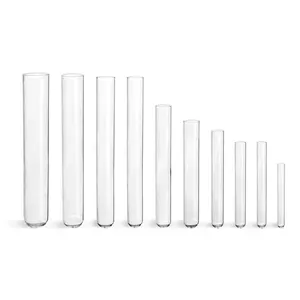
Customized Infrared Heat Resistant High Purity Glass Tube Fused Silica Tube Quartz Glass Pipes Quartz Tube





Culture tubes are a staple in laboratory environments, serving a multitude of purposes across various scientific disciplines. These tubes, essential for conducting experiments in fields such as biology, chemistry, and medicine, come in diverse forms to meet specific experimental needs. This introduction delves into the intricacies of culture tubes, highlighting their types, applications, and features.
The material composition of a culture tube can significantly influence its application. Glass culture tubes are prevalent due to their durability and resistance to high temperatures, making them suitable for autoclaving and repeated use. Conversely, disposable culture tubes, often made of plastic, offer a cost-effective solution for one-time experiments to prevent cross-contamination. For specialized applications, anaerobic culture tubes are designed to maintain an oxygen-free environment for the growth of anaerobic organisms.
In the realm of medical research, blood culture vacutainer tubes are indispensable for collecting and testing blood samples to detect the presence of pathogens. Similarly, sterile culture tubes are crucial in tissue culture and blood banks, ensuring the integrity of the sample is maintained. For genetic studies, PCR tubes are tailored to facilitate polymerase chain reactions with their thin walls that allow for precise thermal transfer.
Innovation in design has led to the creation of culture tubes with caps and culture tube with screw cap options, enhancing the safety and security of the samples contained within. These caps prevent spillage and contamination, a vital feature for maintaining the purity of cultures. Screw cap culture tubes offer an additional layer of security, ensuring that even volatile substances can be contained safely during transport or storage.
To complement the use of culture tubes, a range of accessories is available to streamline laboratory processes. Tube racks, for instance, come in materials like corrosion-resistant stainless steel and more economical wood, commonly found in educational settings. These racks not only organize culture test tubes but also minimize the risk of breakage and spillage, thereby enhancing laboratory safety.
Selecting the appropriate culture tube involves considering factors such as material, capacity, and whether the tube is disposable or reusable. While affordability is a consideration, it is equally important to match the tube to the experiment's requirements to ensure accurate results. For instance, cell culture tubes are designed to support the growth of cell lines and are often treated to promote cell adhesion and growth.